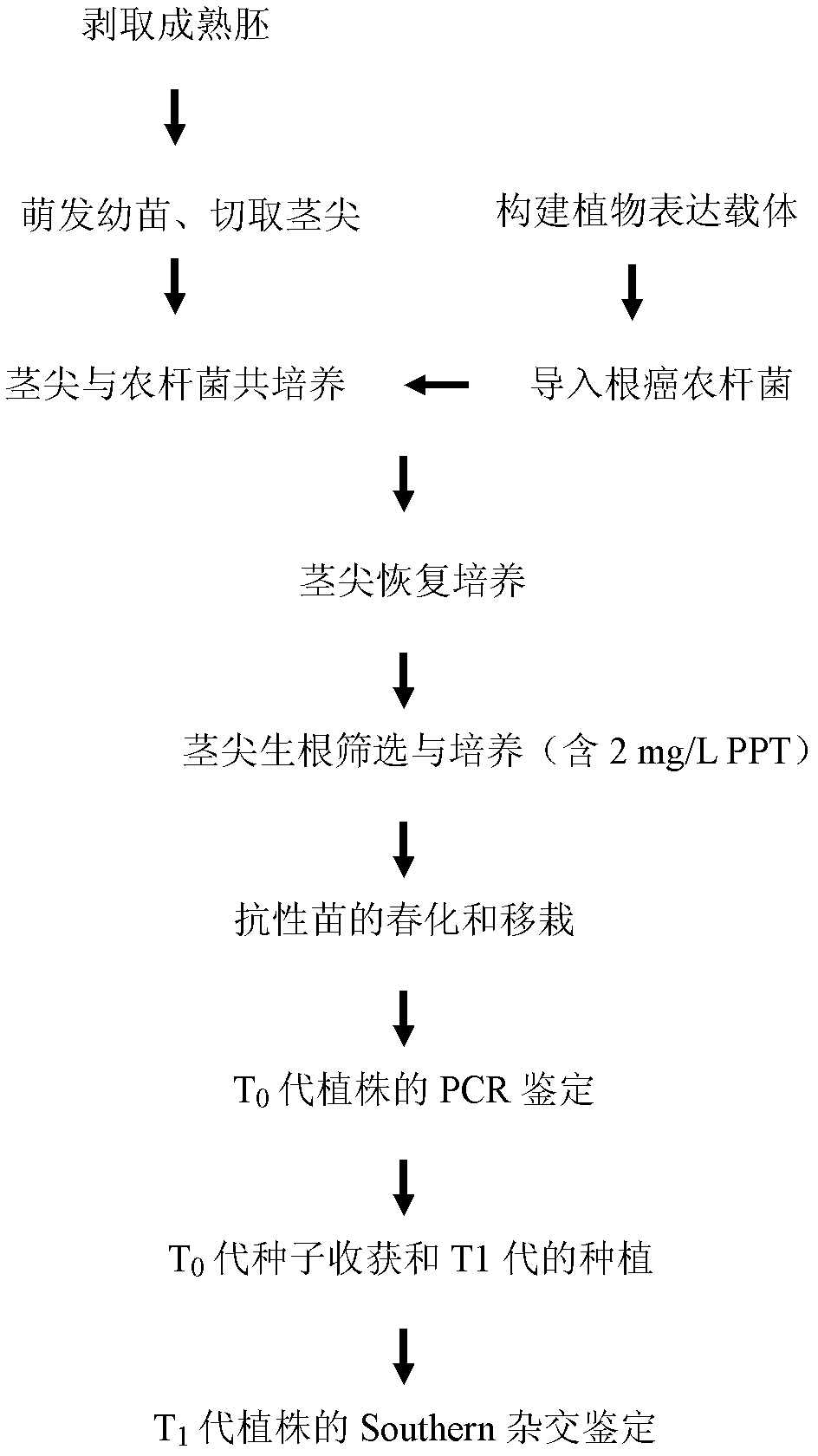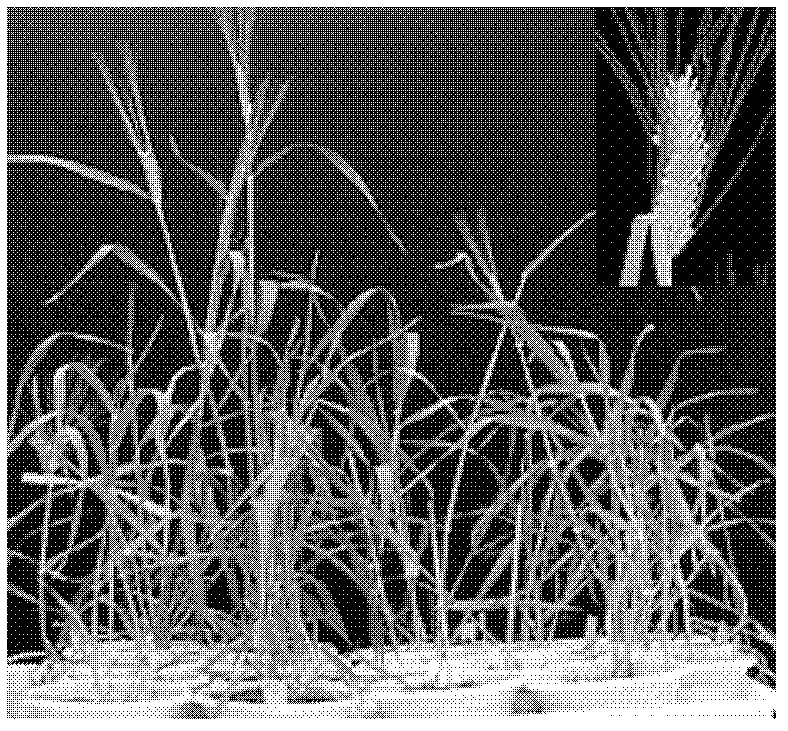Agrobacterium tumefaciens-mediated barley stem apex transformation method
A technology of Agrobacterium tumefaciens and shoot tips, which is applied in the preparation and processing of barley shoot tip materials, and in the field of cultivating transgenic plants, which can solve problems such as limitations, low transformation frequency, and long growth cycle of barley
- Summary
- Abstract
- Description
- Claims
- Application Information
AI Technical Summary
Problems solved by technology
Method used
Image
Examples
Embodiment 1
[0055] Using barley shoot tips as explants, Agrobacterium-mediated gene transformation ( figure 1 ):
[0056] 1. Barley seed sterilization and germination:
[0057] Select healthy and plump barley caryopsis (barley variety Edamai No. 9, Edamai 32122 from Hubei Academy of Agricultural Sciences), remove the lemma slices, soak in 70% ethanol for 3min, and then wash with 0.1% HgCl 2 Soak 13-15mm, rinse with sterile water 4 times, 2min each time. The sterilized seeds were soaked in sterile water, germinated at room temperature for 16 hours, the mature embryos were stripped, placed on the MS1 medium (see "Summary of the Invention") with the scutellum down, and 30 mature embryos were placed in each dish.
[0058] 2. Cutting and pretreatment of stem tips:
[0059] Take sterile seedlings from mature embryos that germinate and grow for 4 days at 22°C, remove the roots, scutellum and young leaves, leave about 5mm of the shoot tip, and prick the growth point with a needle. The shoot t...
Embodiment 2
[0069] Construction of vector PMBL-9 containing bar gene and GFP gene.
[0070] 1) The intermediate vector pMBL-3 was double digested with BamHI and BglII, and the large fragment was recovered by electrophoresis.
[0071] 2) The intermediate vector PUC18-GFP was digested with BamHI and BglII, and the 710bp GFP fragment was recovered by electrophoresis.
[0072] 3) The linearized pMB3 vector obtained in 1) and the GFP fragment obtained in 2) were ligated with T4 ligase.
[0073] 4) Transform the ligation product into Escherichia coli DH5α and extract the plasmid.
[0074] 5) HindIII digestion was used to identify recombinants. A band of about 3000bp was obtained by electrophoresis detection, and the vector PMBL-9 was successfully constructed.
Embodiment 3
[0076] to T 0 PCR detection of generation transformed plants:
[0077] Take about 0.1g of T 0 The leaves of the barley transgenic plants were ground into powder in liquid nitrogen, and the total DNA of barley was extracted by conventional CTAB method (refer to the method disclosed by the applicant's patent application number 200610019482.0). Design a pair of primers Ubi-P5 primer (forward, 5'-CATCTCTGTATATGCATCAG-3') and Ubi-P6 primer (reverse, 5'-CGGTAGTTCTACTTCTGTTC-3' for PCR amplification. In 25ul PCR reaction solution, containing 300ng Template DNA, 2.5ul PCR buffer, 1.5ul 25mM MgCl 2 , 2ul 1.25mMdNTPs, 0.5ul Ubi-P5 primer (10pmol / ul), 0.5ul Ubi-P6 primer (10pmol / ul), 1U Taq polymerase. The PCR reaction program was: pre-denaturation at 95°C for 4 min; denaturation at 94°C for 1 min, annealing at 58°C for 1 min, extension at 72°C for 1 min, 36 cycles; extension at 72°C for 10 min. Agarose Gel Detection of PCR Products After the reaction was completed, 18ul of PCR produ...
PUM
 Login to View More
Login to View More Abstract
Description
Claims
Application Information
 Login to View More
Login to View More - R&D
- Intellectual Property
- Life Sciences
- Materials
- Tech Scout
- Unparalleled Data Quality
- Higher Quality Content
- 60% Fewer Hallucinations
Browse by: Latest US Patents, China's latest patents, Technical Efficacy Thesaurus, Application Domain, Technology Topic, Popular Technical Reports.
© 2025 PatSnap. All rights reserved.Legal|Privacy policy|Modern Slavery Act Transparency Statement|Sitemap|About US| Contact US: help@patsnap.com



